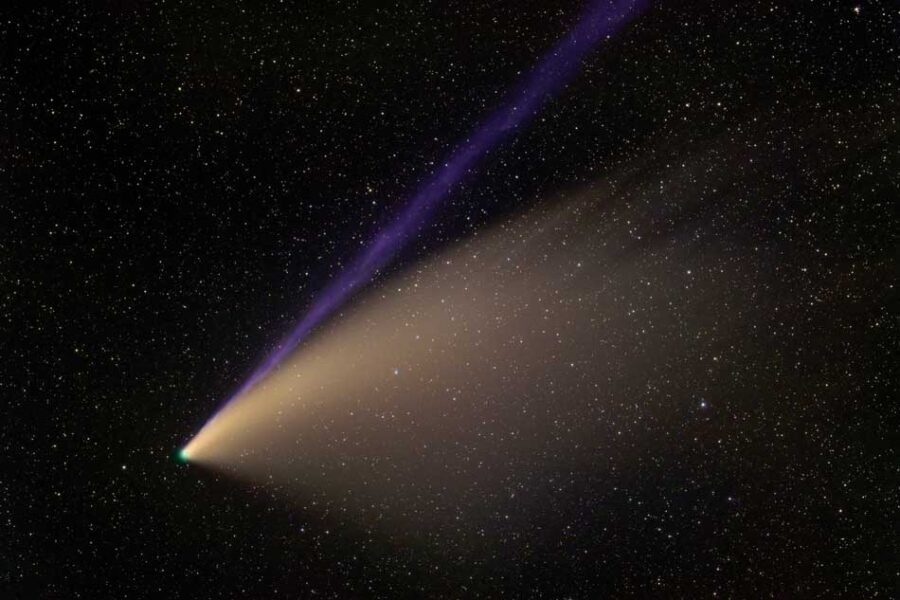There’s nothing like being there, but these days we can all find a pretty good view.

Roger N. Clark, clarkvision.com
Few things stir the soul like the sight of a comet airbrushed onto a dark starry sky, its ghostly glow intruding on a familiar celestial landscape, its tail blown by unseen winds, reminding us that the heavens are far from static and fully known. The transience is part of the thrill.
Comets travel through time as well as space. Short-period comets, which originate in the Kuiper Belt, beat a slow rhythm through our history. The most famous is 1P/Halley, which has a period of 76 years, roughly equal to the current average human life expectancy (which is twice what it was the last time the comet came around). In 1986, with a group of fellow grad students, I trekked into the Tucson desert, pre-dawn, to observe Halley.
I’m a big fan of long-period comets, which come from much farther out, in the Oort Cloud. These surprise guests fly in fast and show up suddenly, without warning, from any direction on the sky. Sometimes it’s only a matter of months between discovery and closest approach. Occasionally they can brighten dramatically, providing delightful views.
My favorite was Comet Hyakutake, the Great Comet of 1996. Known officially as C/1996 B2, it was discovered in January that year and made a close approach to Earth in late March. I was fortunate to be staying in a cabin in Utah, far from any city, and I’ll never forget my first glimpse of it as a little phosphorescent smudge near the horizon, at first so subtle I wondered if I wasn’t imagining it. Then, as my eyes adjusted, or when I looked through binoculars, the immensity of the tail hit me, an extended object that visibly moved during the course of the evening.
There’s no way to predict how many good naked-eye comet viewings any of us will get during our lives. So, any time you have the opportunity to see one, you should seize it.
Having said all this, I have a confession to make: I missed seeing Comet NEOWISE (C/2020 F3) in July. For multiple reasons, including a convalescing dog needing to be carried about, I just couldn’t leave the dense, bright city where I live, and a week of thunderstorms put the kibosh on my binocular gazing efforts.
But missing this comet made me appreciate all the more something that has occurred in recent decades. Today we have a truly interconnected global visual system. In the age of the internet and digital cameras, anyone with a web connection can now savor celestial wonders photographed in exquisite detail against a dizzying array of backgrounds. So, I “saw” NEOWISE rising over Joshua Tree National Monument, reflected in a mountain lake, passing above a European cathedral, and even, in time-lapse, rising from the limb of Earth as shot from the International Space Station.
Of course, there’s still nothing like being out under a dark, star-speckled sky with good friends, a night breeze, the song of cicadas, and the stunning immediacy of the celestial sphere. But these days, when more of us than ever live in cities and are sometimes stuck there, I’m so grateful for all of the talented astrophotographers and appreciative that our experience of the cosmos has become shared in this way.
This article originally appeared in print in the November 2020 issue of Sky & Telescope. Subscribe to Sky & Telescope.
 0
0
Comments
You must be logged in to post a comment.